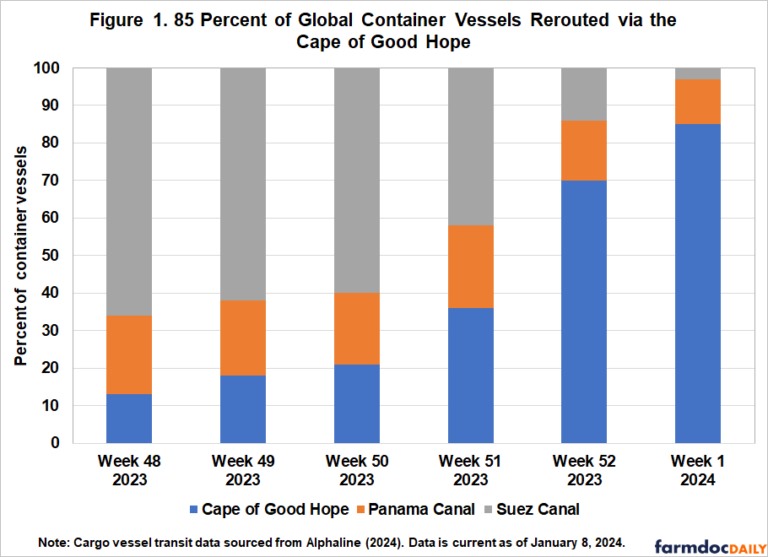U.S. imports of agricultural goods outpaced exports by $37 billion in 2024, meaning the U.S. ran a trade deficit in agricultural goods for the third consecutive year. Exports last year rose to $176 billion, a 1% gain, but imports grew even more, rising 9% to $212 billion. The export value of red meats (beef, pork, and lamb) and corn saw growth, increasing 5% and 9%, respectively (Figure 1). Both rebounded from declines in 2023. According to the U.S. Meat Export Federation (USMEF) beef exports increased 5% to $10.45 billion while pork exports surged 6% to hit a record $8.63 billion. The values of other Nebraska export products were down. Wheat exports were down 2%, animal feed and oil meal was off 10%, and soybeans were off 12%.

The volume of agricultural exports was up as well in 2024, surging 21% following a 17% drop in 2023 (Figure 2). Corn exports led the way, rising 37%, wheat was up 22%, and soybeans were up 7%. Pork tonnage was up 4% while beef tonnage was down 0.05%. Karen Braun of Reuters reported export volumes shipped to Japan and South Korea saw significant growth last year, up 43% and 107%, respectively. Braun also noted exports to Mexico and Columbia were up 29% and 20%, respectively, over previous highs. Lower priced U.S. commodities were cited as the reason for the growth.

The U.S. historically hasn’t ran trade deficits in agricultural goods, but trade deficits are neither inherently good nor bad. It is simply an accounting of the flow of goods between one country and the rest of the world. To a large extent, U.S. trade in agriculture with other nations is complimentary. The U.S. sells beef, corn, and soybeans to the rest of the world while importing coffee, wine and liquor, vegetables, and fruits.
Click here to see more...